To conclude Hatching Space, it might be worthwhile to post the full transcript of an interview carried out at Primary during the summer of 2012 with the three core members of Hatch, Nathaniel J Miller, Michael Pinchbeck and Marie Bertram. The edited version appeared in the Performance issue of Nottingham Visual Arts magazine.
Interview by Wayne Burrows. All photography by Julian Hughes.
![Nathaniel J Miller and Michael Pinchbeck at HATCH Scratch [Photo credit Julian Hughes]](https://hatchnottingham.files.wordpress.com/2012/06/nathaniel-j-miller-and-michael-pinchbeck-at-hatch-scratch-photo-credit-julian-hughes.jpg?w=500&h=335)
Nathaniel J Miller: Can you hear that when you play back? Do you think this will record OK with the echo in here?
WB: I think it’ll be fine. It’s not usually a problem unless there’s background noise…
NJM: …or if we all talk over each other.
WB: So if we get started, I suppose the first thing I wanted to ask about was Helen Cole’s ‘This Secret Location’ essay in this book you lent me which had a line – “It is my belief that the responsibility of any curator is to act as a bridge between artist, audience and context” – which sounded like a fair summary of what Hatch tries to do. Would that comment seem like something you’d see yourselves reflected in?
NJM: I suppose so…does that mean we’re curators?
Michael Pinchbeck: I think anyone who puts something somewhere has to think about those things, whatever the art form. I mean, today we’ve mostly been driving around with Andy Field, who’s going to be bringing a piece here in October, and it’s mainly been a question of asking “where does the work work best?”. After that, it’s about finding an audience, and making it possible for the work to be made in that place.
NJM: Sometimes you don’t know what’s going to come first, whether you find a space that’s interesting enough to want to put work into, and going out to find the right work for it, or whether you find work you want to bring to Nottingham, and then go out to find the right space for that work.
![Frank Abbott: Spaghetti Powerpoint at Broadway [photo credit Julian Hughes]](https://hatchnottingham.files.wordpress.com/2012/06/hatch-image-photo-credit-julian-hughes-2.jpg?w=500&h=335)
WB: Obviously, some Hatch work is devised for particular spaces, particular contexts, so maybe Frank Abbott being at Broadway would be an example of that recently?
MP: We were also invited by Broadway to find artists who would respond to Broadway, and the same with the Playhouse, so we took the audiences from one venue to the other, and invited both them and the artists to think about the journey between the two different venues. In October, we’ll be doing a similar thing, taking audiences from Broadway to Primary, and other events have involved bus journeys, where we thought about what would happen on the bus to the venue. So if we are curating, we’re curating the journeys between venues as much as the events happening in them. We’re trying to create an experience for an audience as much as a performance.
NJM: How things started was with Hatch trying to create places for people to use to show work: existing locations, but not places you’d go to see art or theatre or performance. We’d be in a pub, or somewhere like that, and we’d make the space for a night. Now, we still do that, but also create connections between places and people, audiences, artists and art. That can be two points on a journey within the city, or a network that links things happening here in Nottingham to places outside, so going from Nottingham to Leicester is an example of that.
WB: One thing I remember Hatch being described as, during what I suppose you’d now call its mid-period – around the time of Abroad on Broad Street, or Across on St James’ Street – was that it’s like a very compressed festival. Does that get towards the intention?
NJM: It gets the point that we’ve had an intention that anything could be included, and we always had a wide ranging view of what we defined as performance, and a feeling that no type of performance would be excluded – though some things fall into our particular spiral better than others, and there are certain things it’s logistically possible for us to do, and other things we don’t have the resources to do. But the idea that any kind of performance can happen within a Hatch event is something we’ve always felt was important, and that’s not unlike how a festival works.
MP: One recent definition – not of us in particular, but the kind of thing we do – is “a micro-festival”. Something that happens for a day or two, and can incorporate one-to-one performance and durational pieces, or a more conventional one hour show, all inside the same frame. One of our earlier outings was Hatch: Wish You Were Here, where we had Meg Tait playing an organ with a fork attached to her head. It only lasted a minute and a half, and that’s a thing that could only happen in this kind of micro-festival context, where we can give artists a space to try things out, to do things that are untested and untried. And you don’t necessarily know it’ll only last a minute and a half until you see it.
WB: The other side of that is the way some of the work blurs the line between what is obviously work, and what’s just happening around the venue. At Hatch: Undercover in the Loggerheads pub there was a man sitting at a table doing a performance with jelly babies. The way you encountered it meant it could have been a performance, or it could just as easily have been some eccentric local amusing himself.
MP: I think those kinds of venues allow that blurring and uncertainty to happen much more easily, and now we work with arts centres and more established venues it’s a lot harder to achieve that. But we do still try to programme a few events that are free range, that move around the buildings, that are in the programme but don’t have a fixed time-slot or a fixed space. We’ve always been keen to encourage that potential reading.
NJM: Part of the challenge in using a pub or street is setting things up so you can present performances, and part of the challenge in using an Arts Centre is how you can reconfigure it to make it a space where you can still be surprised by the things that happen.
![Katherine Fishman & Alice Gale-Feeny at Hazard 2 [photo credit Julian Hughes]](https://hatchnottingham.files.wordpress.com/2012/07/katherine-fishman-alice-gale-feeny-at-hazard-2-photo-credit-julian-hughes.jpg?w=500&h=357)
Marie Bertram: I think sometimes it’s easier to fully invent an infrastructure than it can be to adapt to one that’s already there. When it’s all there, I think we need to subvert it a little to suit our purposes. Both situations have their strengths and bring problems.
MP: It’s also when you don’t know where the work is, when it begins or ends, or even what it is. For example, when we first performed at Embrace in Leicester, Medium Rare brought various items of found building material to the venue, the journey on the train with it was a part of the work, the parade to get it to the venue was a part of the work, the construction of a shelter outside Embrace was a part of the work…and then they sat in it for a bit, took it apart, and carried it back again, so for me that’s one of the strengths in Hatch: there’s a transience and mobility that’s a bit like Simon Starling’s shed into boat into shed work, where there’s a real slipperiness about what the work is. That idea of building an infrastructure then taking it away again is part of what Hatch is. We’re a pop-up organisation, with the potential to exist anywhere, at any time, but without a fixed abode.
WB: Has the Hatch infrastructure become more formalised than it was in the beginning – I suppose I mean by that to ask if Hatch now does have a particular identity, even if it’s one it doesn’t necessarily want? I guess there are certain expectations audiences will now bring to Hatch events.
NJM: I think that’s inevitable, but I don’t think that’s a negative thing. One of our intentions in the early days was to keep moving things around, and not be too closely linked to any one space or organisation. We still do that, in Nottingham, at least – in Leicester it’s slightly different because all the Leicester events have involved Embrace – but I think people’s sense of a Hatch identity is something we’ve created. It’s not necessarily a set of features…
MP: …and I think we have avoided doing the same thing twice, so even when the format is similar, there’ll always be some new element, and it keeps changing. Part of that is responding to feedback from audiences and artists. So it was Frank Abbott who suggested we might employ a writer to occupy the programmes and respond to them, so that’s how we came to commission you for the NEAT and Hatching Space programmes, and documentation became one of the things our artists found useful. This meant at Scratch we had 3 or 4 different modes of documentation, from photography and audio to written responses to the work…that’s all part of a process of development and a way of evolving Hatch. As a result, even the events at Embrace, a single venue, have all had very different formats, stretched the building, the staff and ourselves. The next one there will run for a full 12 hours. That’s what we’re trying to do – keep stretching ourselves. When I did my MA at Nottingham Trent someone asked the question: “Do you want to do the same thing better, or do you want to do something different?”. It’s a good question. Did you want to keep trying the same thing and keep getting better at it each time, or did you want to keep trying new things, and going in different directions, trying new things, things you’d not tried before? I think for us, we’ve always chosen the path of different rather than better…
NJM: I’m not sure it’s either-or with those, because if you’re doing the same thing, your toolbox for doing it becomes more refined, and you can end up with something that’s far more polished and professionally produced, but it’s not necessarily any better than what you had to begin with. We could have followed the thing of being a regular night with a set format, and we’d have become much better at doing that as we went on, but the events themselves would have become stale.
MP: We talked in the early days about the Shunt factor, doing something like Shunt in London, where you go along not to see any particular thing they’re showing, but because it was a night being put on by Shunt. We wanted that same sense that you’d go along to Hatch, not really knowing what you might see, but knowing that because it was Hatch, it would have a certain flavour and atmosphere. Often, because we were working in pubs and clubs, that atmosphere was the most important factor to start with, so it was a social event as much as it was an artistic event.
WB: I think that was very much the case, and I guess you could say of how Hatch has developed is that it began with connections between performances within a single venue, has moved on to connect venues around the city, and is now in a phase where you’re becoming part of bigger networks, linking this city to networks elsewhere: you’re bringing people here, like Action Hero from Bristol, or Andy Field from Edinburgh, and at the same time Hatch is travelling, to Leicester and Manchester…is that an evolution you’re conscious of cultivating? I suppose it’s a logical development, that this network keeps expanding.
NJM: I think that’s right, and the network element puts Hatch into a series of networks, and it’s logical that it grows from the back room of a pub, to the scale of a city, to the size of a region, and so on. We’ve always had people travelling to Hatch events, to be part of it, so even when we couldn’t offer money to performers, they still came to show work, to take that opportunity…
![Olwen Davies: Inside Neverhood at Hatch [photo credit Julian Hughes]](https://hatchnottingham.files.wordpress.com/2012/11/olwen-davies-at-hatch-photo-credit-julian-hughes.jpg?w=500&h=333)
MP: We also called it Hatch because we wanted to be a place that would incubate and nurture new work, but also reflect the idea of an opening, a trapdoor, through which work that wouldn’t normally be seen here could find a way to an audience. We used to go and see work in Nottingham, things like Forced Entertainment or Third Angel, exciting companies at venues like The Powerhouse, and it seemed there weren’t the venues showing those kinds of work here anymore, so we were trying to bring some of that back. So when we had Reckless Sleepers at Hatch Abroad, or Action Hero at Hatch Across, we were conscious that there weren’t other contexts where that work could be seen in Nottingham. Now we’re bringing Third Angel to Hatch Twelve in October. We’ve talked about an ambition to have these ‘regional coups’, for Hatch to show work that isn’t being seen anywhere else here, and it’s important that artists can see the region, through Hatch, while audiences get to see these artists, through Hatch. It’s a two-way Hatch, if you like.
NJM: Yeah, and I think because Action Hero hadn’t done anything in Nottingham before…
MP: …they’d not been to the East Midlands before…
NJM: …no, and so hadn’t been seen in Leicester, before we put them on there, either, and Third Angel haven’t been to Leicester for a long time…
MP: They’ve been to Corby, I think.
WB: That touches on something important, I suppose, because going back a few years, you find that Nottingham was always a key city for live art and more experimental kinds of performance, so the National Review of Live Art had roots at the Midland Group, companies like Dogs in Honey and Reckless Sleepers were here, and Nottingham was very much part of a wider national conversation involving cities like Manchester and Sheffield, through those things, and things like the earlier NOW festivals and the Powerhouse programmes. And that has seemed to decline over the years, and a lot of the companies who emerged here moved away, so you have Gob Squad, but they’re mainly working in Berlin, or Reckless Sleepers in Belgium, so I wondered if a consciousness about that lost history was part of the starting motivation for Hatch: a desire to re-seed some of that ground?
MP: Absolutely, we touched on that in the Second Hatchifesto, and talked a bit about how a lot of artist led activity grew up in those gaps during that time, like plants coming up through the cracks in the pavement. And I think there’s definitely an ambition for us to help that process, so we’ve been able to attach companies and work to the Nottingham Playhouse, and we’ve been able to show work at Nottingham Contemporary, so we try to create a new loop within that absence, and it’ll be interesting to see how that evolves. But it seems to me to be about context, so NOW gave the work it brought here a context, and NottDance does that, and has invited to make work for them, and the NEAT festival was a context, and we took part in that, so within these festivals, who want to represent something artist led and from the grass roots, Hatch can present an attractive option. So at NEAT – which wanted to reflect some of the spaces and histories around the city – we were able to bring work to places like Wellington Circus, and the Nottingham Forest football ground, and the Polish community centre in Sherwood. Our ability to initiate these kinds of projects can make us much more adaptable, in terms of creating these fresh contexts, than some of the bigger organisations we sometimes work with. At the same time, we want to find work and bring it into these contexts, so for NEAT, there were two Manchester artists we came across through Green Room, and invited to show here, at the Polish Centre and the Playhouse, so Hatch became a way of drawing that line between the programme at Green Room and the programme at the Playhouse – a line that wouldn’t ordinarily have been drawn. Maybe it goes back to the opening quote about bridges, because often our role is about making these connections.
NJM: There was a niche here, for something that could help to continue showing that kind of work, and when I first came back here, from Liverpool, it did feel there was an absence: things like the NTU creative arts course, and certain venues and programmes, were closing down, but there weren’t yet the new things there replacing them…
MP: …and I think the Creative Arts course at NTU was important, but there were still degree level students emerging from places like New College Nottingham and the fine art courses with strong interests in these forms, so our early events often had combined audiences where those students were a key presence, and we had performers who were graduates of those places, so the NTU strand was only ever one rung on that very diverse ladder of theatre being made in the city.
NJM: It’s also important, when you have people graduating, that there are things in the city that can keep them here, so they don’t all just disperse off to bigger places elsewhere.
MP: Another aspect of that is that there were a group of students on the fine art degree at Trent who decided to set themselves up as a performance collective and NTU asked if Hatch could mentor them. That was the beginning of our relationship with Medium Rare, and they performed with us at several events during their 3 years of study, and are now working with us again as graduates. I think what’s interesting is that although our work with these places has an academic context, it also sits across and between academic and public contexts in an interesting way.
![The Suitcase Ensemble at Hatch:Scratch [photo credit: Julian Hughes]](https://hatchnottingham.files.wordpress.com/2012/06/img_6971web-1024x744.jpg?w=500&h=363)
WB: I’ve noticed that in the last few years a lot of the conventional boundaries have been going through one of their blurrier phases: a lot of visual arts events seem to draw on performance and spoken word, while a lot of theatre and performance seems to be drawing on approaches borrowed from disciplines like music and experimental film: Mamoru Iriguchi’s piece being one example, Frank Abbott’s another, maybe. Do you think these lines are perhaps getting more blurred than usual, or is this just an ongoing thing?
NJM: I think there’s some truth in that, so you’ll get artists like Hetain Patel who just very naturally fall into all sorts of different categories, just through the work he does. He ends up being classified differently in different contexts, and even the same piece can be shown in different ways in different places: he might make a theatre show, or a dance performance, an installation or an exhibition, and it’s hard to say exactly what kind of artist he is, except that he’s an interesting one.
MP: Yes, and I think that applies to a lot of the artists Hatch work with. I think of Frank Abbott, who’s also difficult to place, as a film-maker stroke performer stroke fine artist stroke whatever else he does with all his strange gadgets.
NJM: It’s those people where you can’t say in one or two words what they are and where they fit in who are often making the most interesting work. The concept behind Hatch is constructed in a way that helps us to find those people and bring them together.
WB: Are you finding that the lack of an easy definition about Hatch itself, and where it fits between these different disciplines, is something that helps or hinders you, with funding and finding audiences?
NJM: I think at first it did make it potentially difficult to explain what we wanted to do, and what it was we were trying to create, and it could make it difficult for people to get a handle on what they were seeing and thought we were doing. But as we go on it becomes one of our strengths and means we can have conversations with very different institutions and people, so we can talk to Nottingham Contemporary and Primary, and we can talk with Nottingham Playhouse and Broadway. We can create lots of different contexts and start from anywhere.
MB: It keeps it really adaptable which makes it really exciting for us, and allows us to explore. We don’t end up facing that wall of assumptions about what we are or what we can be.
WB: During NEAT, before I started writing about that programme, I tried to think about what Hatch was, and realised that you were often given the label of ‘experimental’. But then, thinking about what was taken to define experimental, I realised it was often as much a case of having returned to a pre proscenium arch kind of theatre, before the fourth wall was built, when site-specificity and involving the audience might have been more standard. Was that history any part of your thinking?
NJM: We’re not consciously reaching back to any pre-existing form of performance, before the walls were built around it…
MP: …but then, we have avoided building the walls, or we’ve moved the walls around.
NJM: I don’t think we thought of it historically, but there is an idea…and an audience…that can be presented with certain kinds of work in ways that don’t fence it in with ideas like ‘experimental’ and ‘difficult’, and when it’s seen in certain ways, where no big deal is made of how strange and experimental it is, that can draw the audience in and make the work very accessible without needing to compromise it.
MP: If you think about experimental theatre, and the companies who make it, you often find that for some people it’s the word ‘experimental’ that’s off-putting, and for others, it’s the word ‘theatre’ that’s off-putting. Performance in the Pub, which is Hannah Nicklin’s night in Leicester, is billed as “theatre for people who don’t do theatre”, and there is that sense that for some audiences, theatre is not a space you might enter. So if you programme it in a pub or in a club or on a street, it’s more readily accessible and as an audience you can find yourself involved in something you’d never normally find yourself in – and then you might realise you quite like it. So we try to avoid those kinds of definitions, and until we’re in a theatre, we don’t necessarily acknowledge what we do as theatre. There’s always the possibility that it can happen in another place just as easily as it can happen inside a theatre.
WB: Is that the real significance of your insistence on using the word ‘performance-y’?
NJM: Probably. Sometimes things aren’t difficult to understand or avant-garde until you tell people that that’s what they are.
![Fourbeatwalk audiotours at Broadway [photo credit Julian Hughes]](https://hatchnottingham.files.wordpress.com/2012/06/hatch-image-photo-credit-julian-hughes-9.jpg?w=500&h=335)
MP: Frank Abbott and Mat Trivett at Broadway were talking about what Frank was doing there, and they decided to call it ‘expanded cinema’, something that stretched and extended the screen and bled into the auditorium more than usual, and I think what we do could be seen as ‘extended performance’ in the same way. But by not using any very specific terms ourselves it leaves it up to our audiences to decide what they want to call it and how they want to experience it.
WB: Are you finding your audience is now defining itself, as a particular kind of audience that comes to Hatch events, or is it still quite flexible as to who comes?
NJM: There are a lot of people now who come to the things Hatch put on, because they think it’ll be worth seeing what we’re up to, but as long as we’re still moving to new places there will be new audiences coming to the events we put on. Some might have heard of us before, and come because it’s Hatch and they’re curious about what we do, but we’ll still get a different audience coming to see Hatch at Broadway than we will get coming to see us at Embrace Arts. And within that, some of those who come to Embrace will be people who use that centre a lot, and come because our event is on there, even though they wouldn’t normally come to events like ours, and there’ll be others who don’t normally go to Embrace who’ll go to that venue because we’re there. It’s definitely more difficult to surprise people in dedicated arts venues, where people are coming to see a Hatch event, than it is when you’re putting things on in pubs and places where people are there for a drink, or for lots of reasons other than seeing the performances we happen to doing.
MP: What we can still do when we’re at an arts venue is extend the frame of that space, so if we take an audience from Embrace to the Y Theatre, what happens to the audiences in both those places? What if we take an audience from Broadway to the Playhouse? I took a lot of second year Trent students to Nottingham Playhouse and they’d never been there before, because it wasn’t on their radar, so putting things on different people’s radars is one of the legacies we hope can come from the double bills we’re doing. Perhaps we can also offer things you wouldn’t normally get at events: at Embrace, we had a free buffet during Hatch Scratch, and one person who goes to all Embrace’s things said: “I’ve never seen a running buffet at an event here before”, so that became a highlight for him – a surprise. It made his night. But that was the idea – “we feed you, you feedback” – because we didn’t want it to feel like a one-way street, we wanted the audience to feel they were being given something, making it a two-way street and adding a sense of generosity to the night.
![Michael Pinchbeck at Hazard 2 [photo credit Julian Hughes]](https://hatchnottingham.files.wordpress.com/2012/07/michael-pinchbeck-at-hazard-2-photo-credit-julian-hughes.jpg?w=500&h=334)
WB: Do you think there’s a particular Hatch aesthetic that’s developed since you began? There’s a certain thread of work I think of as very Hatch, work which draws on personal experience, can be quite intimate, but is also gentle, not necessarily some of the harder edged kinds of performance that happen in other contexts.
NJM: I think it varies, and there has been some of that more confrontational stuff at Hatch, but, yes, there are some live art platforms that are very confrontational, and we’re not really one of them. Perhaps that’s one of the things about attracting audiences from lots of different places, and wanting them to come back, which sort of means we do try not to scare people off. But we’ve talked about this a lot within Hatch, and one thing we’ve discussed is that we share a feeling that all the fourth walls should be removed and replaced by permeable membranes, and in this context, where you’re trying to create that particular kind of engagement between audiences and performers, anything that requires a fourth wall isn’t going to work. Performances need to be conscious of the audience being there, so whether it’s talking directly to that audience, or acknowledging it in other ways, that’s something that is needed to make things work in a Hatch context.
MP: Even when we’ve done performance platforms in more traditional single venues, like Embrace Arts, we’ve tried to configure things so perhaps one piece will be a promenade performance, another a durational piece, another using cabaret seating, so the audience never walks into the same space twice and always engages with the performances differently.
WB: I suppose that leads on to how things evolve from this point. Hatching Space is the longest-running, widest-ranging and biggest Hatch programme to date, so do you know how this will unfold? We’ve seen two events so far, across three different venues, but is this programme mapped completely, or still a work in progress, and where does this new phase lead you?
MP: Well, there are some exciting things in development, so one of our past partners has offered to support our programme for another two years, and that obviously provides a sense of backbone to what we do next. But there is a good question in looking at where we go next, and I think a lot of that will involve working outside our own city more, taking Hatch to other parts of the country, and drawing connections between those places and Nottingham and the East Midlands.
WB: So you’d be thinking about possible exchanges?
MP: The bus trip to Hazard Festival in Manchester is the first example of that, taking an event to a city where Hatch hasn’t been seen before, and also taking along a Hatch audience to see what happens at Hazard.
NJM: I think it’s also fair to say that as we’ve gone on, and looked at applying for more regular kinds of funding from places like the Arts Council, we’ve had to define what we do much more than we did in our earlier days. We did realise, in thinking about what we actually do, that we had this twin focus on developing new work within the East Midlands and bringing exciting work from elsewhere into the region: work that has difficulty finding a platform anywhere else here, but can be seen as part of Hatch. So whatever form it takes, the next phase will be about those two things: supporting artists here in making new work and bringing new work from outside for artists and audiences to see. Obviously, that’s also a way of putting the work being made here out into the wider world, and bringing the artists based here into a wider conversation, between different organisations and festivals nationally. An exchange programme would be wonderful if we could make it happen.
MP: Another aspect of that is that we were asked to present a talk at ‘Getting It Out There’, so we read the Second Hatchifesto, and afterwards met several companies who are working in other places, like Bristol and Leeds, who said it chimed very much with what they’re doing. So we’re finding, through that national exposure, more like-minded partners who will be potential collaborators in the future. It might be a case of us showing work they’ve produced, or them showing work we’ve produced, but we’re certainly trying to think more nationally. Partly because the circuit is changing all the time. It’s evolving faster than people can keep up, even at the level of touring work to the same venues. More venues are closing, due to the funding situation, and that’s one reason why more homeless or pop up organisations like ours can play a part, putting on work there’s no other context for. We have to be in a position to respond to those requests.
![Shrug at Hazard 3 [photo credit Julian Hughes]](https://hatchnottingham.files.wordpress.com/2012/07/shrug-at-hazard-3-photo-credit-julian-hughes.jpg?w=500&h=500)
WB: So in one sense, you become a kind of invisible building?
MP: Yes, one of the things we looked up to early on was Forest Fringe, based in Edinburgh, and their sense of a free space outside of a festival that offered artists opportunities for free in a climate where everything costs a lot of money. Now they’re homeless themselves and are just doing a publication this year, but we’ve already worked with both Debbie Pearson and Andy Field – the co-directors – and if we can create something that fosters a similar sense of supporting artists and creating an audience experience then we’ll be very happy. I think at first we did struggle with the idea that Hatch didn’t have a home, and thought maybe we needed one, but as we’ve gone on we’ve become aware that it might be one of our strengths, that it’s our USP.
WB: The quote I mentioned at the beginning was about curating, but I wonder if some of what you’re describing shades into areas like producing?
MP: I think you fix the nature of the dialogue in a fine art context when using that word, and because we work in different ways, and what we do can shade into areas like fine art, there are times when we’re curating. But there are other times when we’re producing, or are an outside eye, a dramaturg, or times when we’re marketing officers, or health and safety officers, so all these things are what we do sometimes, as and when we need to.
NJM: Also, curating gets used as a term for people who book bands for a gig, or who put together a mix-tape, and because I’m married to a curator, I’m very careful about how I use the word. Maybe there are some similarities, but we always had the definition of ourselves as a theatre without a building, and more and more we find ourselves doing what we’d be doing if we were a theatre with a building, except we do those things without one. Some of that might be producing, in the same way that a theatre will find artists and develop new work…
MP: Also, if you have a building, there will be people who programme it, but that’s not really the focus for me, the work itself is the focus. Sometimes, in an exhibition context, the curator becomes the focus as much as or more than the work itself, and that’s not what we want to do, we want to create the platform for the work to be seen.
NJM: Yes, the framework of Hatch hopefully offers people something they want to come to, but once they’re there what we want them to do is to see the work in the most intriguing way possible.
WB: I was thinking of curating in relation to Hatch events in the sense of Hatch bringing together sometimes disparate kinds of work, some of it from different disciplines, some unfinished or in process, to a single place and time where it can be seen…
NJM: We’re doing that, but perhaps the difference is we’re not trying to make a particular wider statement.
WB: But I suppose it’s unavoidable that there will be a statement – something we might call Hatch – that emerges from these gatherings of work. Is there a difference between Hatch as an entity and ethos and the sum total of the work you’d see at a Hatch event?
MP: In the run up to every event there’s a lot of dialogue that goes on, especially around pieces created for particular venues, like Frank’s piece at Broadway or Priya Mistry’s piece at Embrace. That’s really important, but there’s also Marie’s concept of ‘aftercare’, a lovely word that reflects the way we hope not to lose contact with artists, and try to keep in touch with them and feed the development of their work.
WB: There has been a strong thread in what you do, with artists who participated in early Hatch events still being involved now. They often return, with new work…
MB: Yes, and sometimes in different constellations, too!
NJM: How it works for us is that someone might participate in different ways, so they might perform a solo piece at one show, then appear in a group show or as part of a duo at another and perhaps take part as a volunteer helping with front of house in another event. I suppose a good example of that in action is Ollie Smith. He’s done his own work with us, helped out at events, and now works with Michael, touring theatre shows like The End and The Beginning while developing shows of his own.
WB: There’s also someone like Kris Rowland, who did The Claque at Fresh and turned up with How We Run at Scratch…
NJM: Yes, How We Run also featured Pat Ashe, who’s worked with us as a solo artist, too. So there are lots of people who work with us, sometimes but not always in those shifting constellations Marie talked about. Some have come back with new work from the same artist or company, like Annette Foster or Action Hero, and some might not have returned yet but are still in touch and might do something else with us another time. The other side of that, obviously, is that we often select work from open submission processes, looking at all sorts of proposals, and we have to be careful not to create any kind of clique around ourselves, and we don’t want to end up in a situation where we’re just working with our friends, or doing things with the same people all the time. But it is lovely to be able to help people develop, to be a part of that, and to provide those opportunities for development in a consistent way. It is the aftercare thing…
![Annette Foster at Hazard 1 [photo credit Julian Hughes]](https://hatchnottingham.files.wordpress.com/2012/07/annette-foster-at-hazard-1-photo-credit-julian-hughes.jpg?w=500&h=334)
MB: Yes, for us it’s about being able to reflect on things, to think ‘what happened here? what did we set out to do and how was it for the artists, or the venue, or for us…’. It’s important to keep that dialogue open between ourselves, as Hatch, the venues and artists, and also to get that feedback to the artists. Olwen Davies, for example, she performed Fridge Logic at Embrace, and through that – well, not only through that, there were some other links – she met Zoo Indigo and worked on Blueprint, and is touring with them now, and will be back later in the year with a new show as part of a Hatch double bill. It’s lovely to have these ongoing relationships, and we learn about the needs of artists from those. We learn how we can support that development.
NJM: One thing about the double bills is that each one creates a residency within which an artist can create a new work, so while it’s important for us to find work and create contexts where artists can perform and try out new things, with us taking the risk, it’s also very important to offer artists these spaces to work in, to create things before we get to that point. Sometimes it’s necessary for artists to have a space where work can be made in the first place, and sometimes you’ll have an artist like Frank Abbott who’ll have his own resources, his own space, but we can offer him a week at Broadway to make something new: we offer the time rather than – or as well as – the space. Then with Pat Ashe, we can give him a space to work where he can think about what he wants to make in a very focused way.
MB: With someone like Frank, his needs were more technical, and so technical that we knew we couldn’t support that ourselves. But Broadway could, with their expertise and staff, and they were generous in giving what was needed to create that piece. I guess it’s making these connections, and seeing where we can find the help we need, or that artists might need to Hatch that work.
WB: Some of that is about Hatch finding and creating the relationships with those venues, but with this newspaper going out, through NVA, and the relationship with Embrace, you’re also open to working by invitation, I assume? If there are people reading this wondering why Hatch hasn’t approached them, I assume that might sometimes be a question of them contacting you?
MP: Do you mean venues or artists?
WB: Either. I suppose the question is about how far you’re open to creating new partnerships and who might initiate them.
MB: There are so many different starting points. Sometimes it begins with a theme, sometimes with an artist we want to bring to the region, sometimes with a venue we’re particularly interested in working with. There are so many different directions things can go from those starting points.
NJM: Sometimes artists or venues will approach us with ideas or projects and we decide whether we collaborate on those or not. We can’t do everything we’re asked to do, simply because we don’t have the resources to do certain things at certain times, but sometimes it’s those less expected connections that can prove the most fruitful. Those are often the ideas we wouldn’t have come up with just between the three of us but when they come in from somewhere else can turn out to be fantastic. The next thing we want to do is branch out and work more widely in Leicester, because I suppose Leicester’s an obvious location for Hatch, but we might not have thought of that as an obvious course of action until we were invited to do something by Embrace and were able to build a relationship with the city and a new audience through that venue.
![The Gramophones at Hazard Festival [photo credit Julian Hughes]](https://hatchnottingham.files.wordpress.com/2012/07/the-gramophones-at-hazard-festival-photo-credit-julian-hughes.jpg?w=500&h=334)
WB: I suppose we’re coming towards the end, so if I can, I’d like to ask you the standard job interview question and wonder where you see Hatch in five years’ time?
MP: It’s interesting that we sometimes thought it would be nice to do something that wasn’t a performance but maybe a publication, so this guest editing of NVA is a step towards that. We also want to think about doing something that exists in a different context, so we acted as a sort of bridge between New Art Exchange and Frank Abbott leading a series of workshops with the Yard young people’s theatre group there, and that was a new development for us that has led to us doing a double bill there. Sometimes you go down a slightly different route and those diversions create the beginnings of new relationships, so perhaps we just need to figure out how many routes we can go down at once given that there are only three of us. I mean we do have teams of volunteers and helpers at each event but it still feels like we’re constantly stretching our capacity.
NJM: It’s hard to say what things will look like in five years and it would be a shame if we were able to say because I think we’d always hope to surprise ourselves. It would be nice, if we were still doing it in five years, if there were more than three of us, and if we were able to devote more time and resources to it ourselves.
MP: Not in the sense of taking on a building, but perhaps a next step might be to find a workspace. Because we’ve always been mobile and remote – and sometimes nocturnal – it’s not been ideal. There are also things we’ve talked about in the past that remain long-term aims, like taking artists to Edinburgh, or being able to engage in higher profile platforms.
NJM: Maybe putting on some much larger scale events that encomass the whole of the city at once. That would be very interesting as well.
WB: I guess now I think of it, it must be around five years since the first Hatch event at the Maze?
NJM: …ish. That was 2008.
WB: So next year will be five years from the starting point.
MP: Perhaps we should do a Hatch: Five.
NJM: And who knows, this time next year we might be back at The Maze. The Maze is a very nice place.
MP: The next step after a national conversation is obviously an international conversation. There are various things going on across Europe that it would be very nice to engage with, and with things like the World Event Young Artists happening here later this year, with all its partner organisations, and the British Council’s showcase in Edinburgh, these are international platforms we’d like to be part of, to go to these things, and talk to people, which might be where future collaborations can begin.
NJM: Traditionally, exchange programmes at school were always about bringing someone from, and going, somewhere in mainland Europe, so that might be the next thing we’d want to look into.
WB: The final thing would be to ask if there’s anything we’ve not talked about that you’d want to be sure was mentioned, or something we have discussed that perhaps you’d really want to emphasise?
![Shrug at Hazard 1 [photo credit Julian Hughes]](https://hatchnottingham.files.wordpress.com/2012/07/shrug-at-hazard-1-photo-credit-julian-hughes.jpg?w=400&h=590)
MP: Just returning to that international note, thinking about artists we’d like to bring to Nottingham, obviously during NEAT we did manage to bring Gabriele Reuter over from Berlin, so that’s another way we might think about those international links, as getting some of the work going on in other places internationally in front of audiences here who might not otherwise see it.
WB: Did Gabriele already have a link to Nottingham through Dance4?
MP: She’d been an associate artist there and had shown a work in progress at NottDance, but the finished version of Tourist hadn’t been shown here.
WB: Of course, and Gabriele Reuter’s piece at Nottingham Contemporary was also the first time – if I’m not mistaken – that Hatch had shown a self-contained show in a conventional venue by itself?
NJM: That’s right, yes.
MP: It did feature Hetain Patel as a guest performer, though, so even then there was a collaborative element. What’s interesting for us is that we can engage with artists at very different stages in their careers, so Medium Rare are just beginning, Reckless Sleepers are very well established but only rarely seen in the region, while Hetain is someone we’ve worked with several times who has become well known here and elsewhere. Then there’s someone like Frank Abbott who isn’t so much Hatching as re-Hatching, after retirement from being a lecturer for twenty years. It’s an exciting trajectory.
NJM: It’s not just a showcase for emerging artists or established artists or mid-career artists but somewhere we can put all these different things together, somewhere where a context can be created within which all these different kinds of work and levels of experience can talk to each other.
MP: We’ve talked in the past about whether we could one day do a Hatch for children, or a Hatch that focuses on inter-generational performance, bringing together these age groups. Also, being aware of Nottingham’s past, I’d want to emphasise things like Hatch: Mass, which draws its own line connecting Nottingham Playhouse with Spanky Van Dyke’s bar, which was the site of the city’s old rep theatre and so filled the role of the Playhouse before the Playhouse we know today opened around 1963. So that event invites Hatch and our artists to reflect on that history – and what’s exciting is the way it allows us to open up another kind of dialogue with the changing history of the city.
![Zoo Indigo at Hazard [photo credit Julian Hughes]](https://hatchnottingham.files.wordpress.com/2012/07/zoo-indigo-at-hazard-3-photo-credit-julian-hughes.jpg?w=500&h=500)
![Hatch at Embrace Arts (Oct 13) [photo credit Julian Hughes]](https://hatchnottingham.files.wordpress.com/2013/12/img_8365edit.jpg?w=300&h=205)
![Hannah Nicklin [photo credit Julian Hughes]](https://hatchnottingham.files.wordpress.com/2013/12/img_8532edit.jpg?w=300&h=215)
![Third Angel [photo credit Julian Hughes]](https://hatchnottingham.files.wordpress.com/2013/11/third-angel-photo-credit-julian-hughes.jpg?w=300&h=262)
![Deborah Pearson [photo credit Julian Hughes]](https://hatchnottingham.files.wordpress.com/2013/11/deborah-pearson-photo-credit-julian-hughes.jpg?w=300&h=195)
![Mr Ferris & Daniel Oliver [photo credit Julian Hughes]](https://hatchnottingham.files.wordpress.com/2013/12/img_8497edit.jpg?w=300&h=203)
![The Gramophones [photo credit Julian Hughes]](https://hatchnottingham.files.wordpress.com/2013/12/img_8422edit.jpg?w=300&h=203)
![Eric Rosoman [photo credit Julian Hughes]](https://hatchnottingham.files.wordpress.com/2013/12/img_8617edit.jpg?w=300&h=203)
![Andy Field [photo credit Julian Hughes]](https://hatchnottingham.files.wordpress.com/2013/12/img_8524edit.jpg?w=300&h=203)
![Steve Fossey [photo credit Julian Hughes]](https://hatchnottingham.files.wordpress.com/2013/12/img_8355edit.jpg?w=300&h=203)
![Krissi Musiol [photo credit Julian Hughes]](https://hatchnottingham.files.wordpress.com/2013/11/krissi-musiol-photo-credit-julian-hughes.jpg?w=300&h=203)
![Jaye Kearney [photo credit Julian Hughes]](https://hatchnottingham.files.wordpress.com/2013/12/img_8565edit.jpg?w=300&h=204)
![Alice Gale-Feeny II - Hatch Scratched at NAE [photo credit Julian Hughes]](https://hatchnottingham.files.wordpress.com/2013/08/alice-gale-feeny-ii-hatch-scratched-at-nae-photo-credit-julian-hughes.jpg?w=500&h=384)
![Bibi Letts - Hatch Scratched at NAE [photo credit Julian Hughes]](https://hatchnottingham.files.wordpress.com/2013/08/bibi-letts-hatch-scratched-at-nae-photo-credit-julian-hughes.jpg?w=500&h=366)
![Priya Mistry II - Hatch Scratched at NAE [photo credit Julian Hughes]](https://hatchnottingham.files.wordpress.com/2013/08/priya-mistry-ii-hatch-scratched-at-nae-photo-credit-julian-hughes.jpg?w=500&h=339)
![Priya Mistry I - Hatch Scratched at NAE [photo credit Julian Hughes]](https://hatchnottingham.files.wordpress.com/2013/08/priya-mistry-i-hatch-scratched-at-nae-photo-credit-julian-hughes.jpg?w=500&h=331)
![Alice Gale-Feeny I - Hatch Scratched at NAE [photo credit Julian Hughes]](https://hatchnottingham.files.wordpress.com/2013/08/alice-gale-feeny-i-hatch-scratched-at-nae-photo-credit-julian-hughes.jpg?w=500&h=339)
![Michael Pinchbeck I - Hatch Scratched at NAE [photo credit Julian Hughes]](https://hatchnottingham.files.wordpress.com/2013/08/michael-pinchbeck-i-hatch-scratched-at-nae-photo-credit-julian-hughes.jpg?w=500&h=339)
![Michael Pinchbeck II - Hatch Scratched at NAE [photo credit Julian Hughes]](https://hatchnottingham.files.wordpress.com/2013/08/michael-pinchbeck-ii-hatch-scratched-at-nae-photo-credit-julian-hughes.jpg?w=500&h=347)
![Olwen Davies I - Hatch Scratched at NAE [photo credit Julian Hughes]](https://hatchnottingham.files.wordpress.com/2013/08/olwen-davies-i-hatch-scratched-at-nae-photo-credit-julian-hughes.jpg?w=500&h=404)
![Olwen Davies III - Hatch Scratched at NAE [photo credit Julian Hughes]](https://hatchnottingham.files.wordpress.com/2013/08/olwen-davies-iii-hatch-scratched-at-nae-photo-credit-julian-hughes.jpg?w=500&h=339)
![Ollie Smith II - Hatch Scratched at NAE [photo credit Julian Hughes]](https://hatchnottingham.files.wordpress.com/2013/08/ollie-smith-ii-hatch-scratched-at-nae-photo-credit-julian-hughes.jpg?w=500&h=339)
![Ollie Smith I - Hatch Scratched at NAE [photo credit Julian Hughes]](https://hatchnottingham.files.wordpress.com/2013/08/ollie-smith-i-hatch-scratched-at-nae-photo-credit-julian-hughes.jpg?w=500&h=408)
![Frank Abbott I - Hatch Scratched at NAE [photo credit Julian Hughes]](https://hatchnottingham.files.wordpress.com/2013/08/frank-abbott-i-hatch-scratched-at-nae-photo-credit-julian-hughes.jpg?w=500&h=339)
![Frank Abbott II - Hatch Scratched at NAE [photo credit Julian Hughes]](https://hatchnottingham.files.wordpress.com/2013/08/frank-abbott-ii-hatch-scratched-at-nae-photo-credit-julian-hughes.jpg?w=500&h=339)
![Hatch Scratch 13 [image credit Julian Hughes]](https://hatchnottingham.files.wordpress.com/2013/07/hatch-scratch-13-image-credit-julian-hughes.jpg?w=500&h=336)
![Hatch Scratch 13 [photo credit - Julian Hughes] (5)](https://hatchnottingham.files.wordpress.com/2013/07/hatch-scratch-13-photo-credit-julian-hughes-5.jpg?w=500&h=339)
![Hatch Scratch 13 [photo credit - Julian Hughes]](https://hatchnottingham.files.wordpress.com/2013/07/hatch-scratch-13-photo-credit-julian-hughes.jpg?w=500&h=339)
![Hatch Scratch 13 [photo credit - Julian Hughes] (2)](https://hatchnottingham.files.wordpress.com/2013/07/hatch-scratch-13-photo-credit-julian-hughes-2.jpg?w=500&h=339)
![Hatch Scratch 13 [photo credit - Julian Hughes] (3)](https://hatchnottingham.files.wordpress.com/2013/07/hatch-scratch-13-photo-credit-julian-hughes-3.jpg?w=500&h=339)
![Hatch Scratch 13 [photo credit - Julian Hughes] (4)](https://hatchnottingham.files.wordpress.com/2013/07/hatch-scratch-13-photo-credit-julian-hughes-4.jpg?w=500&h=498)
![Hatch Scratch 13 [photo credit - Julian Hughes] (6)](https://hatchnottingham.files.wordpress.com/2013/07/hatch-scratch-13-photo-credit-julian-hughes-6.jpg?w=500&h=339)
![Hatch Scratch 13 [photo credit - Julian Hughes] (22)](https://hatchnottingham.files.wordpress.com/2013/07/hatch-scratch-13-photo-credit-julian-hughes-22.jpg?w=500&h=492)
![Hatch Scratch 13 [photo credit - Julian Hughes] (9)](https://hatchnottingham.files.wordpress.com/2013/07/hatch-scratch-13-photo-credit-julian-hughes-9.jpg?w=500&h=321)
![Hatch Scratch 13 [photo credit - Julian Hughes] (10)](https://hatchnottingham.files.wordpress.com/2013/07/hatch-scratch-13-photo-credit-julian-hughes-10.jpg?w=500&h=332)
![Hatch Scratch 13 [photo credit - Julian Hughes] (11)](https://hatchnottingham.files.wordpress.com/2013/07/hatch-scratch-13-photo-credit-julian-hughes-11.jpg?w=500&h=339)
![Hatch Scratch 13 [photo credit - Julian Hughes] (12)](https://hatchnottingham.files.wordpress.com/2013/07/hatch-scratch-13-photo-credit-julian-hughes-12.jpg?w=500&h=339)
![Hatch Scratch 13 [photo credit - Julian Hughes] (14)](https://hatchnottingham.files.wordpress.com/2013/07/hatch-scratch-13-photo-credit-julian-hughes-14.jpg?w=500&h=339)
![Hatch Scratch 13 [photo credit - Julian Hughes] (15)](https://hatchnottingham.files.wordpress.com/2013/07/hatch-scratch-13-photo-credit-julian-hughes-15.jpg?w=500&h=339)
![Hatch Scratch 13 [photo credit - Julian Hughes] (18)](https://hatchnottingham.files.wordpress.com/2013/07/hatch-scratch-13-photo-credit-julian-hughes-18.jpg?w=500&h=335)
![Hatch Scratch 13 [photo credit - Julian Hughes] (19)](https://hatchnottingham.files.wordpress.com/2013/07/hatch-scratch-13-photo-credit-julian-hughes-19.jpg?w=500&h=459)
![Hatch Scratch 13 [photo credit - Julian Hughes] (20)](https://hatchnottingham.files.wordpress.com/2013/07/hatch-scratch-13-photo-credit-julian-hughes-20.jpg?w=350&h=444)
![Hatch Scratch 13 [photo credit - Julian Hughes] (21)](https://hatchnottingham.files.wordpress.com/2013/07/hatch-scratch-13-photo-credit-julian-hughes-21.jpg?w=500&h=339)
![Hatch Scratch 13 [photo credit - Julian Hughes] (17)](https://hatchnottingham.files.wordpress.com/2013/07/hatch-scratch-13-photo-credit-julian-hughes-17.jpg?w=500&h=339)
![Nathaniel J Miller and Michael Pinchbeck at HATCH Scratch [Photo credit Julian Hughes]](https://hatchnottingham.files.wordpress.com/2012/06/nathaniel-j-miller-and-michael-pinchbeck-at-hatch-scratch-photo-credit-julian-hughes.jpg?w=500&h=335)
![Frank Abbott: Spaghetti Powerpoint at Broadway [photo credit Julian Hughes]](https://hatchnottingham.files.wordpress.com/2012/06/hatch-image-photo-credit-julian-hughes-2.jpg?w=500&h=335)
![Katherine Fishman & Alice Gale-Feeny at Hazard 2 [photo credit Julian Hughes]](https://hatchnottingham.files.wordpress.com/2012/07/katherine-fishman-alice-gale-feeny-at-hazard-2-photo-credit-julian-hughes.jpg?w=500&h=357)
![Olwen Davies: Inside Neverhood at Hatch [photo credit Julian Hughes]](https://hatchnottingham.files.wordpress.com/2012/11/olwen-davies-at-hatch-photo-credit-julian-hughes.jpg?w=500&h=333)
![The Suitcase Ensemble at Hatch:Scratch [photo credit: Julian Hughes]](https://hatchnottingham.files.wordpress.com/2012/06/img_6971web-1024x744.jpg?w=500&h=363)
![Fourbeatwalk audiotours at Broadway [photo credit Julian Hughes]](https://hatchnottingham.files.wordpress.com/2012/06/hatch-image-photo-credit-julian-hughes-9.jpg?w=500&h=335)
![Michael Pinchbeck at Hazard 2 [photo credit Julian Hughes]](https://hatchnottingham.files.wordpress.com/2012/07/michael-pinchbeck-at-hazard-2-photo-credit-julian-hughes.jpg?w=500&h=334)
![Shrug at Hazard 3 [photo credit Julian Hughes]](https://hatchnottingham.files.wordpress.com/2012/07/shrug-at-hazard-3-photo-credit-julian-hughes.jpg?w=500&h=500)
![Annette Foster at Hazard 1 [photo credit Julian Hughes]](https://hatchnottingham.files.wordpress.com/2012/07/annette-foster-at-hazard-1-photo-credit-julian-hughes.jpg?w=500&h=334)
![The Gramophones at Hazard Festival [photo credit Julian Hughes]](https://hatchnottingham.files.wordpress.com/2012/07/the-gramophones-at-hazard-festival-photo-credit-julian-hughes.jpg?w=500&h=334)
![Shrug at Hazard 1 [photo credit Julian Hughes]](https://hatchnottingham.files.wordpress.com/2012/07/shrug-at-hazard-1-photo-credit-julian-hughes.jpg?w=400&h=590)
![Zoo Indigo at Hazard [photo credit Julian Hughes]](https://hatchnottingham.files.wordpress.com/2012/07/zoo-indigo-at-hazard-3-photo-credit-julian-hughes.jpg?w=500&h=500)

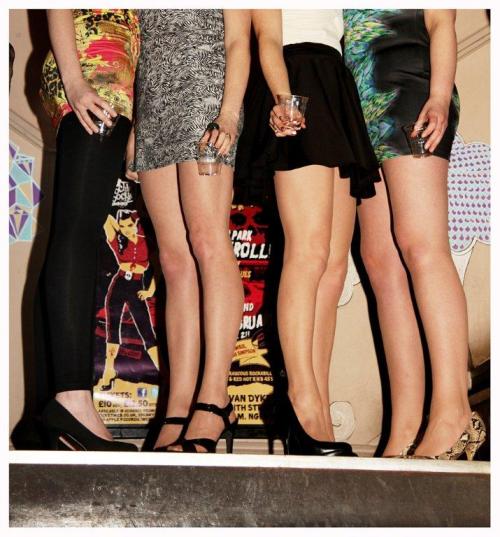

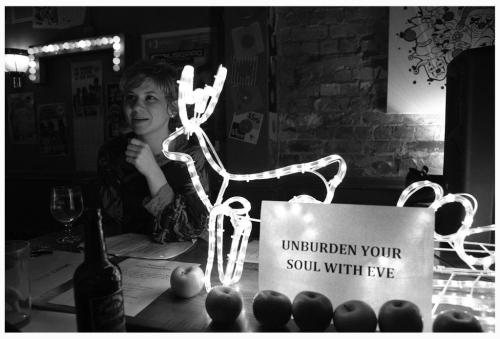
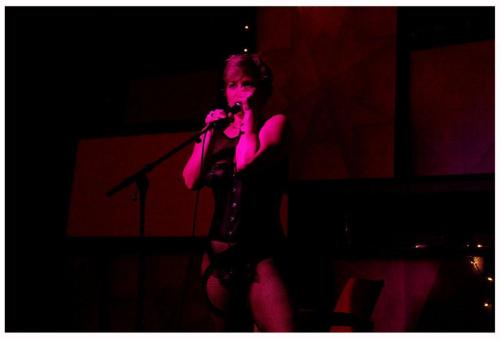
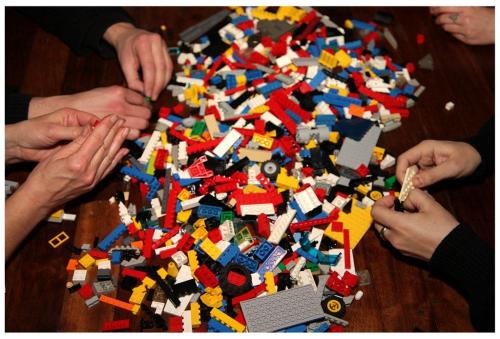
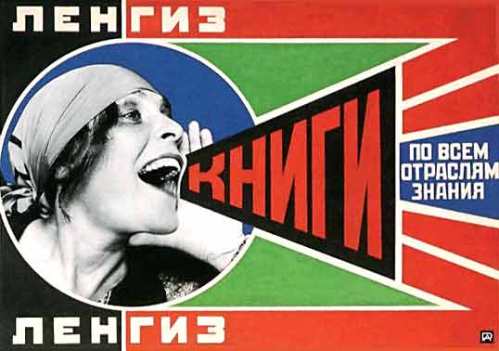
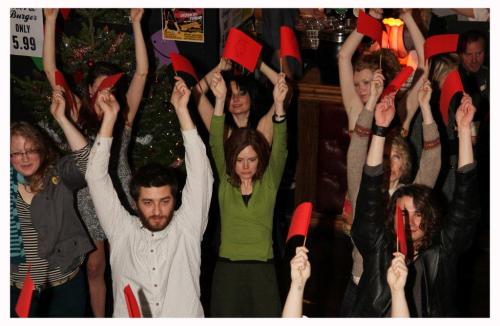
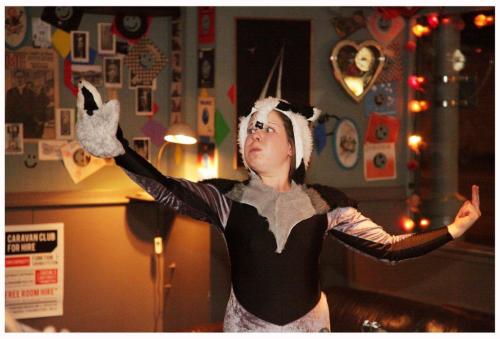
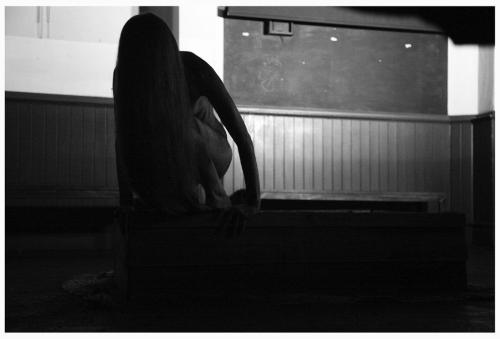
![Gilda Birch at Hatch Mass [photo credit Julian Hughes]](https://hatchnottingham.files.wordpress.com/2013/01/gilda-birch-at-hatch-mass-photo-credit-julian-hughes.jpg?w=500&h=335)
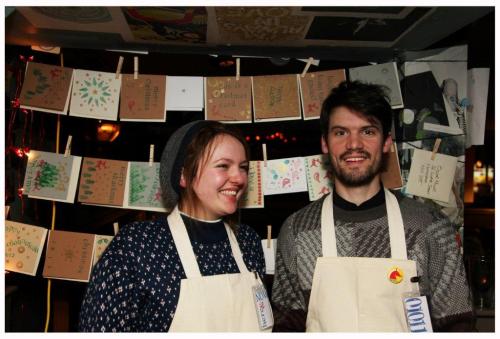
![fourbeatwalk at Hatch Mass [photo credit Julian Hughes]](https://hatchnottingham.files.wordpress.com/2013/01/fourbeatwalk-at-hatch-mass-photo-credit-julian-hughes.jpg?w=500&h=339)
![Maison Foo at Hatch [photo credit Julian Hughes]](https://hatchnottingham.files.wordpress.com/2012/12/maison-foo-at-hatch-photo-credit-julian-highes-6.jpg?w=500&h=339)
![Maison Foo at Hatch [photo credit Julian Hughes]](https://hatchnottingham.files.wordpress.com/2012/12/maison-foo-at-hatch-photo-credit-julian-highes-7.jpg?w=500&h=339)
![Maison Foo at Hatch [photo credit Julian Hughes]](https://hatchnottingham.files.wordpress.com/2012/12/img_4467edit.jpg?w=500&h=428)
![Maison Foo at Hatch [photo credit Julian Hughes]](https://hatchnottingham.files.wordpress.com/2012/12/img_4391edit1.jpg?w=500&h=170)
![Maison Foo at Hatch [photo credit Julian Hughes]](https://hatchnottingham.files.wordpress.com/2012/12/maison-foo-at-hatch-photo-credit-julian-highes.jpg?w=500&h=339)
![Maison Foo at Hatch [photo credit Julian Hughes]](https://hatchnottingham.files.wordpress.com/2012/12/maison-foo-at-hatch-photo-credit-julian-highes-4.jpg?w=500&h=339)
![Maison Foo at Hatch [photo credit Julian Hughes]](https://hatchnottingham.files.wordpress.com/2012/12/maison-foo-at-hatch-photo-credit-julian-highes-5.jpg?w=500&h=334)
![Maison Foo at Hatch [photo credit Julian Hughes]](https://hatchnottingham.files.wordpress.com/2012/12/img_4380edit.jpg?w=500&h=339)
![Maison Foo at Hatch [photo credit Julian Hughes]](https://hatchnottingham.files.wordpress.com/2012/12/maison-foo-at-hatch-photo-credit-julian-highes-2.jpg?w=500&h=339)
![Olwen Davies: Inside Neverhood at Hatch [photo credit Julian Hughes]](https://hatchnottingham.files.wordpress.com/2012/11/olwen-davies-at-hatch-photo-credit-julian-hughes-4.jpg?w=500&h=333)
![Olwen Davies: Inside Neverhood at Hatch [photo credit Julian Hughes]](https://hatchnottingham.files.wordpress.com/2012/11/olwen-davies-at-hatch-photo-credit-julian-hughes-5.jpg?w=500&h=369)
![Olwen Davies: Inside Neverhood at Hatch [photo credit Julian Hughes]](https://hatchnottingham.files.wordpress.com/2012/11/olwen-davies-at-hatch-photo-credit-julian-hughes-6.jpg?w=500&h=333)
![Olwen Davies: Inside Neverhood at Hatch [photo credit Julian Hughes]](https://hatchnottingham.files.wordpress.com/2012/11/olwen-davies-at-hatch-photo-credit-julian-hughes-3.jpg?w=500&h=175)
![Andy Field: Zilla! Part Two at Broadway [photo credit Julian Hughes]](https://hatchnottingham.files.wordpress.com/2012/11/andy-field-at-broadway-photo-credit-julian-hughes-2.jpg?w=500&h=333)
![Andy Field: Zilla! Part Two at Broadway [photo credit Julian Hughes]](https://hatchnottingham.files.wordpress.com/2012/11/andy-field-at-broadway-photo-credit-julian-hughes.jpg?w=500&h=333)
![Andy Field Zilla! Part Two at Broadway [photo credit Julian Hughes]](https://hatchnottingham.files.wordpress.com/2012/11/andy-field-zilla-part-two-at-broadway-photo-credit-julian-hughes.jpg?w=500&h=333)
![Andy Field: Zilla! Part Two at Broadway [photo credit Julian Hughes]](https://hatchnottingham.files.wordpress.com/2012/11/andy-field-at-broadway-photo-credit-julian-hughes-4.jpg?w=500&h=333)
![Olwen Davies: Fridge Logic at Broadway [photo credit Julian Hughes]](https://hatchnottingham.files.wordpress.com/2012/10/006.jpg?w=500&h=336)
![Olwen Davies: Fridge Logic at Broadway [photo credit Julian Hughes]](https://hatchnottingham.files.wordpress.com/2012/10/008.jpg?w=500&h=170)
![Olwen Davies: Fridge Logic at Broadway [photo credit Julian Hughes]](https://hatchnottingham.files.wordpress.com/2012/10/img_3110box.jpg?w=500&h=335)
![fourbeatwalk: The Disaster Bar at Primary [photo credit Julian Hughes]](https://hatchnottingham.files.wordpress.com/2012/10/004.jpg?w=500&h=336)
![fourbeatwalk: The Disaster Bar at Primary [photo credit Julian Hughes]](https://hatchnottingham.files.wordpress.com/2012/10/005.jpg?w=500&h=336)
![Andy Field: Zilla Part One at Primary [photo credit Julian Hughes]](https://hatchnottingham.files.wordpress.com/2012/10/001.jpg?w=500&h=336)
![Andy Field: Zilla Part One at Primary [photo credit Julian Hughes]](https://hatchnottingham.files.wordpress.com/2012/10/002.jpg?w=500&h=336)
![Andy Field: Zilla Part One at Primary [photo credit Julian Hughes]](https://hatchnottingham.files.wordpress.com/2012/10/003.jpg?w=500&h=336)
![Andy Field: Zilla Part One at Primary [photo credit Julian Hughes]](https://hatchnottingham.files.wordpress.com/2012/10/009.jpg?w=500&h=332)
![Third Angel & mala voadora [photo credit Julian Hughes]](https://hatchnottingham.files.wordpress.com/2012/10/third-angel-mala-voadora-photo-credit-julian-hughes-1024x695.jpg?w=500&h=339)
![Third Angel & mala voadora [photo credit Julian Hughes] (2) (1024x689)](https://hatchnottingham.files.wordpress.com/2012/10/third-angel-mala-voadora-photo-credit-julian-hughes-2-1024x689.jpg?w=500&h=336)
![Third Angel and mala voadora [photo credit Julian Hughes]](https://hatchnottingham.files.wordpress.com/2012/10/third-angel-mala-voadora-photo-credit-julian-hughes-4-1024x689.jpg?w=500&h=336)
![Third Angel & mala voadora [photo credit Julian Hughes]](https://hatchnottingham.files.wordpress.com/2012/10/third-angel-mala-voadora-photo-credit-julian-hughes.jpg?w=500&h=333)
![Annette Foster [photo credit Julian Hughes]](https://hatchnottingham.files.wordpress.com/2012/10/annette-foster-photo-credit-julian-hughes.jpg?w=500&h=415)
![Annette Foster [photo credit Julian Hughes]](https://hatchnottingham.files.wordpress.com/2012/10/annette-foster-photo-credit-julian-hughes-3.jpg?w=500&h=415)
![Annette Foster [photo credit Julian Hughes]](https://hatchnottingham.files.wordpress.com/2012/10/annette-foster-photo-credit-julian-hughes-2.jpg?w=500&h=344)